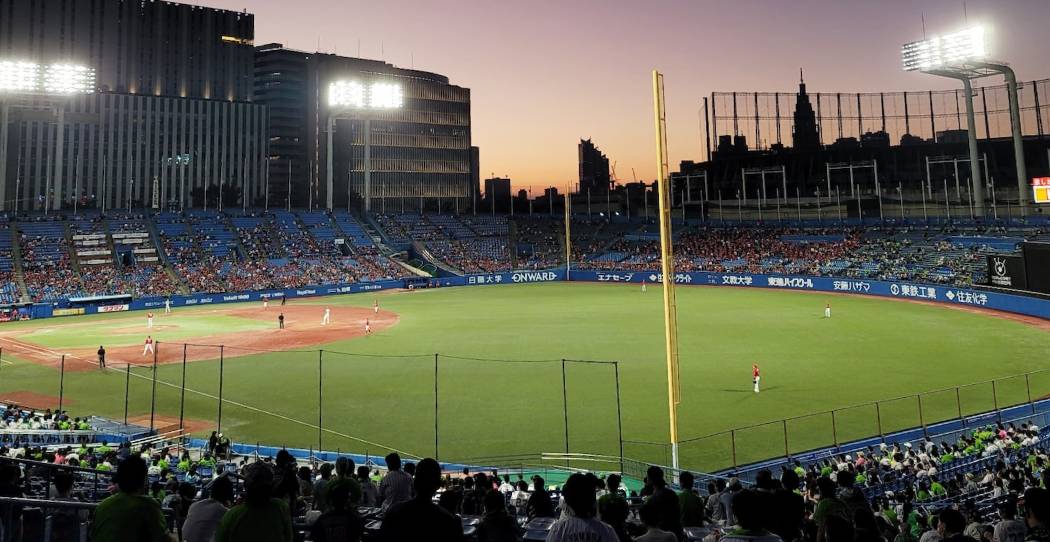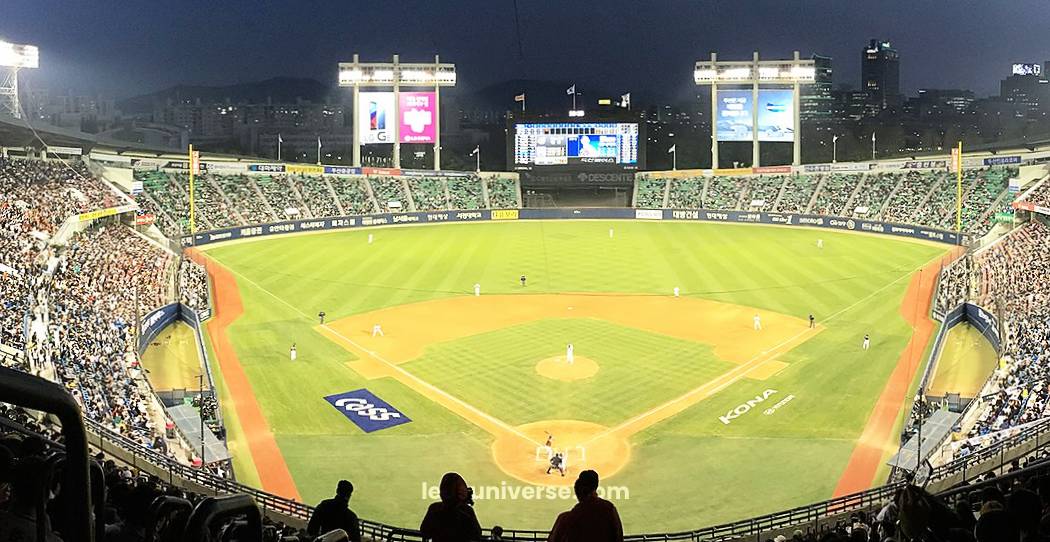
As communities embrace eco-friendly approach, solar lighting is not just brightening baseball fields—it’s illuminating a path toward a more sustainable future in sports and recreation. Join us as we explore the myriad benefits, advanced technologies, and inspiring case studies behind solar baseball field lighting.
The use of solar energy has gained traction across various sectors, including sports. Solar baseball field lighting represents a forward-thinking approach to illuminating athletic venues while promoting sustainability. This innovative lighting solution not only enhances the playing experience but also aligns with a growing emphasis on environmental responsibility. By utilizing renewable energy sources, solar lighting systems are revolutionizing how baseball fields are illuminated, making them more accessible and eco-friendly.
Reach out for free lighting consultation
Table of Contents
ToggleSolar baseball field lighting provides a range of advantages that extend beyond just reducing electricity costs. One of the primary benefits lies in its environmental impact. By harnessing the sun’s energy, solar lighting systems minimize dependence on fossil fuels, resulting in lower greenhouse gas emissions. This shift towards renewable energy aligns with global efforts to combat climate change and encourages communities to adopt sustainable practices.

Conventional lighting systems typically rely on electricity generated from fossil fuels, contributing to greenhouse gas emissions. In contrast, solar lights draw energy directly from the sun, resulting in a cleaner energy source that helps to reduce the overall carbon footprint of athletic facilities. By implementing solar lighting, communities take a proactive step in supporting environmental sustainability while promoting healthier lifestyles through sports and recreation.
From an economic standpoint, solar lighting systems can offer substantial savings. While the initial investment in solar technology may be higher than traditional lighting, the long-term cost savings can be significant. Solar lights require minimal maintenance and have lower operational costs due to their reliance on free solar energy. Over time, these savings can offset the upfront expenses, making solar lighting a financially sound choice for many baseball facilities.
Moreover, solar lighting can enhance the revenue potential of baseball fields. With extended usage hours, facilities can host more events, including tournaments and evening games, attracting larger crowds and increasing income from concessions and admissions. As a result, investing in solar lighting can become a strategic financial decision for organizations looking to maximize the utility and profitability of their athletic venues.
Solar baseball field lighting enhances the community experience by extending usage hours. Fields that are well-lit can accommodate evening practices and games, promoting active participation in sports. This not only fosters a sense of community but also encourages youth engagement in baseball, helping to cultivate future generations of players. Additionally, with more families able to attend evening games, local businesses benefit from increased foot traffic, creating a win-win scenario for the entire community.
Modern solar lights are designed with sleek, attractive fixtures that blend seamlessly into the landscape. They enhance the visual appeal of baseball fields, contributing to a welcoming atmosphere for players and spectators alike. This aesthetic enhancement, combined with the practical benefits of improved visibility, creates an inviting environment for all.
The technology driving solar baseball field lighting is a blend of solar panels, LED fixtures, and battery storage systems. Solar panels are responsible for capturing sunlight and converting it into electricity. This electricity powers LED lights, which are known for their energy efficiency and longevity. Compared to traditional incandescent or halogen bulbs, LED fixtures consume significantly less power and have a lifespan of 25,000 to 50,000 hours, making them an ideal choice for sports lighting.
The integration of battery storage systems allows solar lights to operate even when the sun isn’t shining. During daylight hours, solar panels charge the batteries, which store the energy for use at night. This technology ensures that baseball fields remain illuminated during evening games, regardless of weather conditions. Advanced systems often include smart technology that allows for remote control and monitoring of lighting conditions, enhancing the user experience.
Recent innovations in solar technology have further improved the efficiency and functionality of solar lighting systems. Higher-efficiency solar panels can convert more sunlight into electricity, allowing for better performance in various weather conditions. Additionally, smart lighting systems can automatically adjust brightness levels based on the surrounding light, ensuring optimal visibility while conserving energy when full brightness is not required.
Another aspect of solar lighting technology is the durability of the fixtures. Many solar lights are designed to withstand harsh weather conditions, including heavy rain, snow, and high winds. This robustness ensures that the lights remain operational throughout the year, providing reliable lighting for baseball fields in diverse climates.
The shift towards smart technology in solar lighting is making systems even more user-friendly. Features such as remote access and automated controls allow facility managers to monitor and adjust lighting settings from their smartphones or computers. This ease of use helps to optimize energy consumption while ensuring the safety and enjoyment of players and spectators.
Several successful implementations of solar baseball field lighting demonstrate its effectiveness and benefits. One notable example is the installation of solar lighting at a community baseball field in California. This project not only illuminated the field but also served as a model for sustainability within the community. The solar lights allowed for extended evening play and practices, fostering a vibrant baseball culture in the area. The facility reported a significant increase in usage rates, with more teams able to schedule games and practices without the constraints of limited daylight.
In this California community, the implementation of solar lighting transformed the local baseball field into a hub of activity. With enhanced visibility during evening hours, the field became a gathering place for families and friends, further strengthening community bonds. The initiative not only provided practical benefits but also inspired other local organizations to consider sustainable practices in their operations.
Another exemplary project took place in Florida, where a local school district adopted solar lighting for multiple baseball fields. The district faced challenges with traditional lighting systems, including high electricity bills and frequent maintenance costs. By transitioning to solar lighting, the district reduced its operational expenses and decreased its environmental impact. The positive feedback from players, coaches, and parents underscored the success of the initiative, leading to plans for further solar installations in other athletic facilities.
The Florida school district’s decision to adopt solar lighting was driven by a desire to enhance student experiences while reducing costs. As a result of this initiative, student-athletes were able to practice and compete more frequently, contributing to improved performance and a stronger sense of school spirit. The successful implementation of solar lighting prompted discussions about incorporating renewable energy solutions in other areas of the school district, including transportation and facility management.
In Texas, a municipal baseball complex transitioned to solar lighting, achieving both financial and environmental benefits. The city invested in a comprehensive solar lighting system that illuminated not only the baseball fields but also the surrounding park areas. The project received funding through state and federal grants aimed at promoting renewable energy initiatives. The installation not only provided enhanced lighting for evening games but also improved safety for park visitors after dark.
The solar lighting project in the Texas municipal complex showcased how public facilities could benefit from renewable energy solutions. With increased safety and enhanced playability, the fields became more attractive for local leagues and tournaments. As a result, the city saw an uptick in community engagement and participation in sports, reinforcing the idea that solar lighting contributes to healthier, more active lifestyles.
These case studies illustrate the diverse applications of solar baseball field lighting and highlight the transformative effects on communities. From enhancing player experiences to fostering community engagement, these projects demonstrate how solar lighting can serve as a catalyst for positive change in local sports culture.
The transition to solar lighting also aligns with broader societal trends towards sustainability. Communities across the country are increasingly recognizing the importance of environmentally friendly practices. By adopting solar lighting for baseball fields, municipalities and organizations send a clear message about their commitment to sustainability and renewable energy, inspiring others to consider similar initiatives.
As communities adopt solar lighting solutions, they not only reduce their carbon footprints but also promote awareness of renewable energy. The visibility of solar installations in local parks and sports facilities serves as a reminder of the benefits of sustainable practices. These initiatives encourage residents to explore solar energy for their homes, further amplifying the impact of community-led sustainability efforts.
As technology continues to evolve, the potential for solar baseball field lighting will only grow. Emerging advancements in solar energy and smart lighting will lead to more efficient systems, making it easier for facilities to transition to solar solutions. With increasing awareness of the benefits of renewable energy, solar baseball field lighting represents a forward-looking approach to enhancing athletic facilities while promoting a healthier planet.

The maintenance of solar lighting systems is another aspect to consider. One of the advantages of solar lights is their low maintenance requirements. Unlike traditional lighting systems that may require frequent bulb replacements and electrical repairs, solar lights generally have fewer components that can fail. The LED bulbs used in these systems can last many years, which reduces the frequency of replacements.
Accumulation of dirt can diminish the efficiency of solar panels, thereby reducing the energy available to power the lights. In most cases, a simple cleaning with water and a soft cloth can help maintain the effectiveness of the solar panels.
Batteries should be checked periodically to ensure they are functioning correctly. Some systems come equipped with monitoring software that can provide alerts if there are issues with battery performance. Keeping the battery charged and in good condition will ensure that the lighting system operates effectively throughout the night.
While solar lighting systems are designed for durability, there may come a time when components need replacement. Planning for the eventual replacement of batteries or solar panels is a key consideration for facility managers. Having a long-term maintenance plan can help facilities remain operational without unexpected outages, ensuring that fields remain well-lit for events and practices.
The combination of low maintenance needs and proactive management makes solar lighting an appealing choice for facilities looking to implement sustainable practices without adding significant ongoing costs.
Solar baseball field lighting represents a revolutionary step in the intersection of sports and sustainability. By utilizing renewable energy sources, communities can enhance their athletic facilities while reducing their environmental footprint. The numerous benefits, including economic savings, community engagement, and improved visibility, underscore the value of investing in solar lighting solutions.
As more communities adopt solar lighting technology, they pave the way for a greener future in sports and recreation. Through innovative projects, collaboration, and education, solar lighting can transform baseball fields into symbols of sustainability and community pride, creating lasting impacts for generations to come.